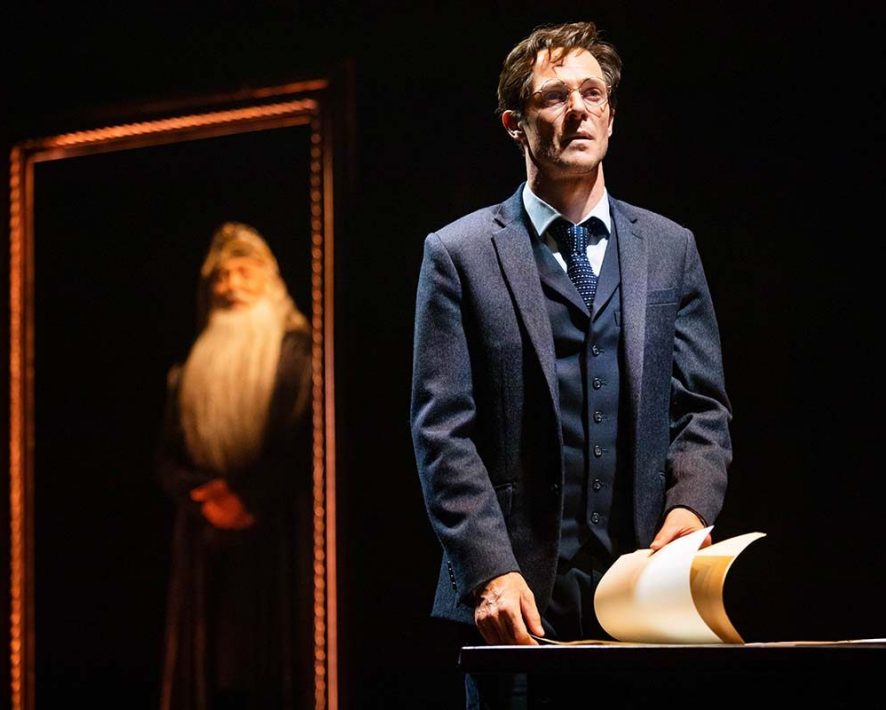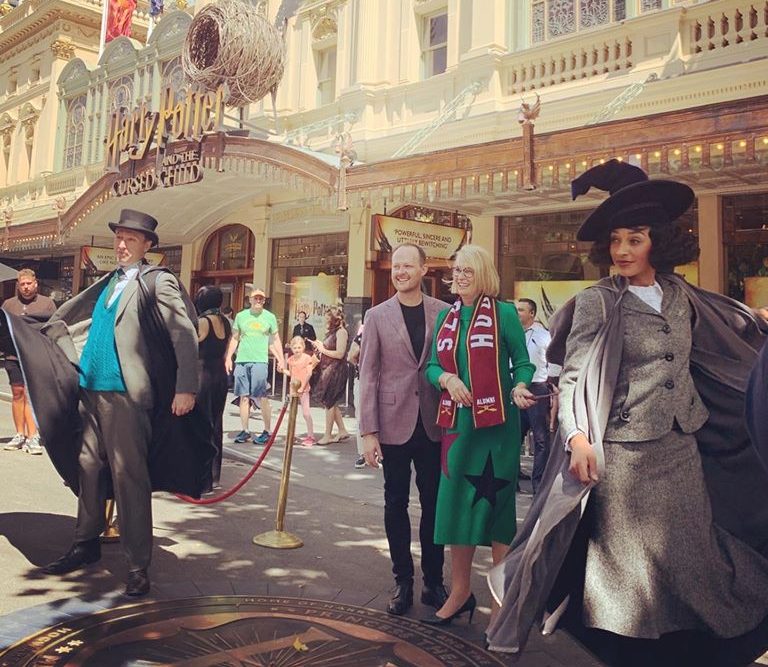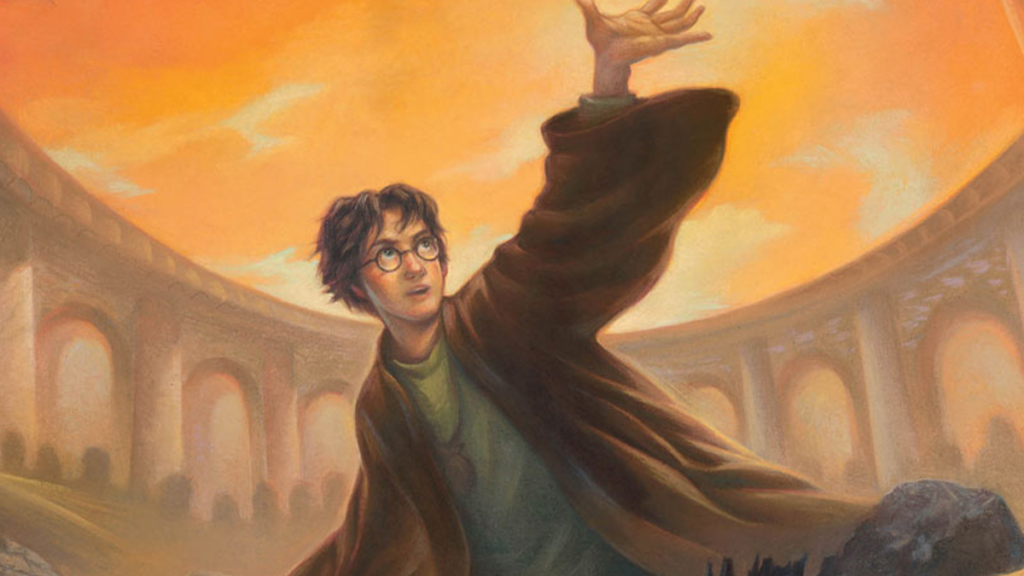
‘Harry Potter and the Cursed Child’ // Michael Cassel Group
‘Harry Potter and the Cursed Child’ was magical.
After nearly four and a half years at the Princess Theatre in Melbourne, ‘Harry Potter and the Cursed Child’ is coming to a close. Theatre Haus dropped into the magical realm, one final time, before the curtain drops.
A franchise that needs no introduction, Harry Potter has defined a generation and embedded itself in the global psyche. With books, films, theme parks and merchandise adding their own experiential dimensions of the magical “Wizarding World” to the real world, it was inevitable that the franchise would step into the theatrical realm.
The technical advancements in live entertainment, the tradition of illusions on stage and the popular genre of magic realism in modern theatre, all culminate in a strong foundation for a spectacular Potter stage show.
A play by Jack Thorne, based on a story by J.K. Rowling, John Tiffany, and Thorne, continues the Harry Potter saga where the films left off. It follows Harry, now a Ministry of Magic official, and his son Albus through several years of his Hogwarts schooling. It premiered in London in 2016, won several awards, and has had subsequent productions on Broadway, and around the globe in Australia, Germany, Canada, and Japan. While originally a two-part production, the most recent offering – in Australia at least – shortens the script to a traditional two-act show, albeit across some 3.5 hours.
While the political controversy surrounding Rowling and the early end of the Fantastic Beasts series have done little to help promote the show, Cursed Child has challenges of its, with a plot that is wildly misaligned with the rules of time established in the original novels and a queer subplot that is but isn’t. Furthermore, with a dedicated fanbase that is now well into their 30s but an original target reader of children and young adults, Cursed Child has somewhat of an identity crisis.
In the role of Harry, Gareth Reeves was powerful. He didn’t make an attempt to mimic Radcliffe and presented a Harry that was more mature and grown, albeit with his own challenges and awkward disposition. Scenes with Harry and his son Albus, portrayed by Ben Walter, were meaningful and poignant. They stood alone and could have easily formed the basis for their own straight-play about the difficulties of fatherhood and becoming a man.
Instead, and unfortunately, the Cursed Child continuously redirected the attention from the sincere drama of Potter’s home life to the adventure genre with rigid effect and less daring than the novels.
Walter was, however, very endearing in the role of Albus. With a youthful energy, his performance was reminiscent of Marty McFly in ‘Back to the 80s’.
While the original script was blind to the queer undertones, and this updated version still adds layers of are-they-aren’t-they, the chemistry between Walter as Albus and Nyx Calder as Scorpius was palpable.
Of all the performances, Calder as Scorpius struck the perfect balance for a mixed-generation audience. While the character could easily have fallen into the trap of superficial comic relief, Calder was able to milk the laughs authentically, and give sincere moments alongside his “special friend”.
Other notable performances came from George Henare as Albus Dumbledore, Lachlan Woods as Draco Malfoy and Katie-Jean Harding as Ginny Weasley. Harding was heartfelt and some of her lines were tear-jerking, again highlighting the value of the Potter-household-storyline that could have stood on its own. Similarly, Woods gave Draco the depth audiences wanted from the grown-up Slytherin and his rawness was a welcomed reprieve from other more over-the-top performances.
While pairs of characters had chemistry, and the ensemble was one, as a whole the company felt disjointed in their choices. Some opted for farcical, musical-like personas, whereas others performed with realism and sincerity. It was an odd directional choice and perhaps reflected the identity crisis of the text itself.
With all that being said, the star of the production was not in fact a performer. It was primarily the technicians and the synchronicity within the creative team.
Direction by John Tiffany and movement direction by Steven Hoggett paired with the outstanding soundtrack from Imogen Heap was deeply moving. Scenes shifted seamlessly, characters vanished and reappeared, the pulse of the music and shifts in bodies transcended the space and created magic on the stage.
Lighting design by Neil Austen met with set design by Christine Jones to engulf the audience in the world. While time travel as a plot device remains controversial, the recreation of the theme in lighting, set, sound and movement was incredible to behold. The theatre shook, the ripple of time radiated through the venue, and the audience travelled with the show.
Illusions and magic by Jamie Harrison paired with all of the above and showcased the limits of live entertainment and the true purpose of bringing the “Wizarding World” to the stage.
The flaws in the Cursed Child script do not go unnoticed, and neither do the challenges of its context; however, the magic of live entertainment and the franchise meant the endeavour made sense. This production was a celebration of the creative geniuses behind the stage; the illusionists and movement makers, the technical gurus and the directing teams.
Magic, illusions and trickery are the foundations of theatre, and ‘Harry Potter and the Cursed Child’ allows creatives to push the boundary just a little more.
‘Harry Potter and the Cursed Child’ must close July 9, 2023 at Princess Theatre, Melbourne. For more information visit the official website.






